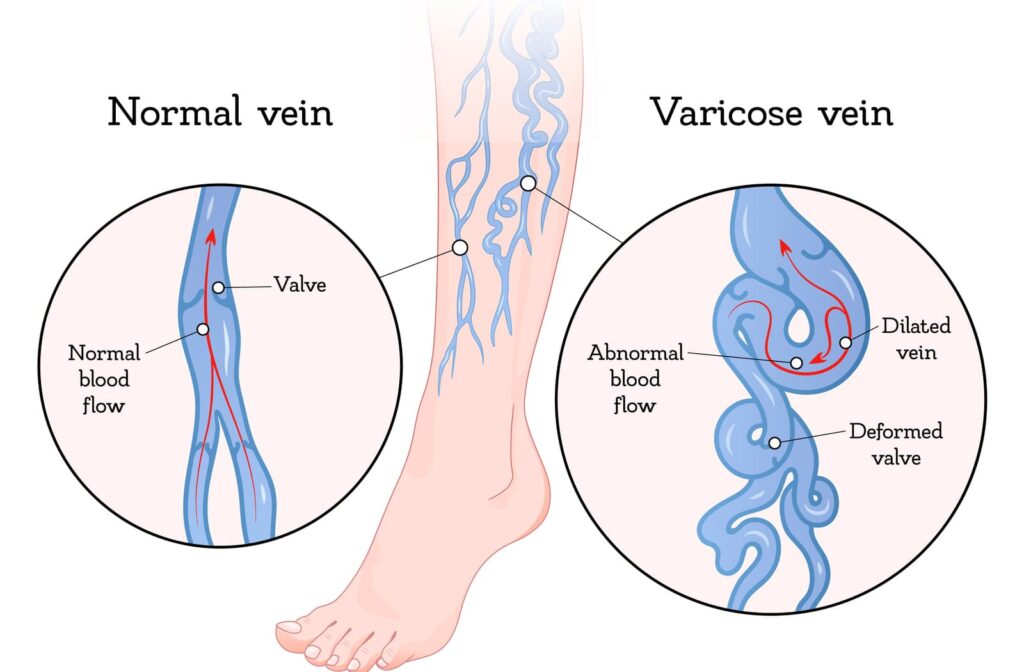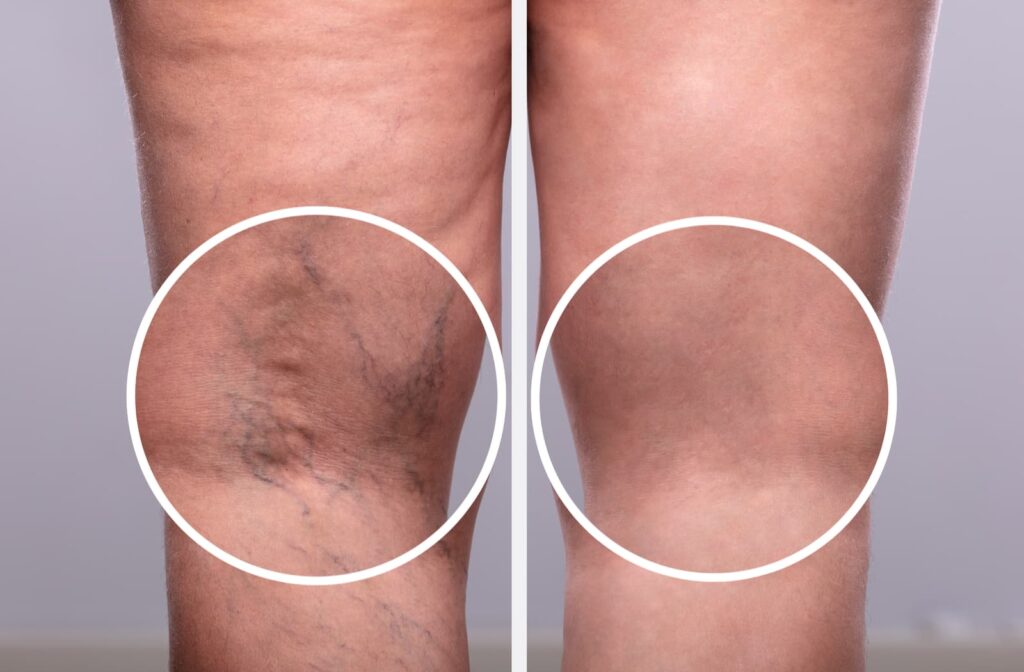
Varicose veins can affect your confidence and even your health. If you’re experiencing this condition, your doctor may recommend sclerotherapy as a treatment option, but what is this procedure?
Continue reading to learn more about sclerotherapy, including what it is, how it works, and what it can treat.
What Are Varicose Veins?
Varicose veins are veins that have become twisted and enlarged, typically occurring in your legs. This condition causes your veins to become enlarged, dilated, and overfilled with blood, leading to a swollen and raised appearance. Approximately 25% of adults have varicose veins to some degree.
The severity of varicose veins can vary from person to person. Some people may have a cosmetic concern with their varicose or spider veins, a milder variation of this condition, while others can experience aches and discomfort.
You may experience several symptoms of varicose veins, depending on your situation. Some symptoms include:
- Dark purple or blue-colored veins
- Veins appearing twisted or bulging
- Aches or a heavy feeling in your legs
- Muscle cramping, burning, or throbbing in your lower legs
- Skin discoloration around your veins
- Itchy areas around your veins
What Causes Varicose Veins?
Varicose veins occur when your veins don’t function properly. Issues happen when valves within your veins fail, allowing blood to pool rather than move towards your heart. This collection of blood causes the veins to enlarge.
Varicose veins often develop in your legs because these veins are furthest from the heart, and gravity makes it more difficult for blood to move upward. There are some potential causes for this condition, including:
- Pregnancy
- Menopause
- Age
- Standing for long periods
- Obesity
- Family history
When varicose veins bother you, sclerotherapy is a potential option. Whether your reason for treatment is cosmetic or medical, your dermatologist can help you address this condition.
What is Sclerotherapy?
Sclerotherapy is a non-surgical procedure used to treat varicose veins. Your doctor injects a solution called sclerosant into your affected veins, causing them to shrink.
This shrinkage occurs because the solution irritates the vein, causing swelling before cutting off blood flow. This vein will turn into scar tissue before it fades from view.
When Should You Consider Sclerotherapy?
Sclerotherapy can be beneficial, but not everyone needs to have this procedure. The best way to know if sclerotherapy is right for you is to speak with your doctor. They can discuss your needs and recommend this treatment if they believe it can help.
You should consider speaking with your doctor about sclerotherapy if:
- Your varicose veins are painful
- Your legs are sore or feel heavy
- Your skin is patchy & dry
- You have rashes near any veins
Sclerotherapy Risks
Sclerotherapy is a safe and effective procedure, with 75 to 90% of patients experiencing the successful removal of veins. This treatment is less invasive than surgery and requires no anesthesia. However, there are always risks with any medical procedure.
Possible reactions to sclerotherapy include:
- Bruising
- Redness
- Discomfort near the injection site
- Allergic reactions
- Skin discoloration
Your doctor will discuss these risks with you during your initial consultation. If you’re interested in this treatment, how does this process work?
How Does Sclerotherapy Work?
The sclerotherapy process features your consultation, treatment, and aftercare. Your doctor will explain this procedure, its risks and address your questions during the initial consultation.
The Treatment
Depending on your doctor’s instructions, you may need to avoid certain lotions and oils in the days leading up to your treatment. Your doctor may recommend avoiding aspirin, ibuprofen (Advil, Motrin, & Nuprin), and other anti-inflammatory drugs for 48 to 72 hours before your treatment begins.
You will need to lie on your back with your legs up during the procedure. Your doctor will clean the treatment area before inserting a small needle into your vein.
This injection features the sclerosant solution. You may feel a burning or tingling sensation as this occurs.
Spider veins may take 3 to 6 weeks to fully respond to this procedure, and varicose veins may take between 3 to 4 months.
The Aftercare
After your injection is complete, your doctor will massage the treatment area to prevent the re-entry of blood into the vein. Most times, patients require additional treatments to fully collapse a vein. If you have several varicose veins, you’ll likely need multiple treatments.
Remaining active after your procedure finishes is important to help prevent potential blood clots. You may experience tenderness and bruising at the injection site. Another aftercare suggestion may be to avoid sunlight as it can cause dark spots in the treatment area.
Your doctor will give you detailed instructions after your treatment is complete to help you recover.
Speak With Your Dermatologist
Sclerotherapy can help address the varicose and spider veins you’re experiencing. They can help treat your condition and address any of your concerns. If you’re interested in sclerotherapy, contact Dr. Newman and his team.


